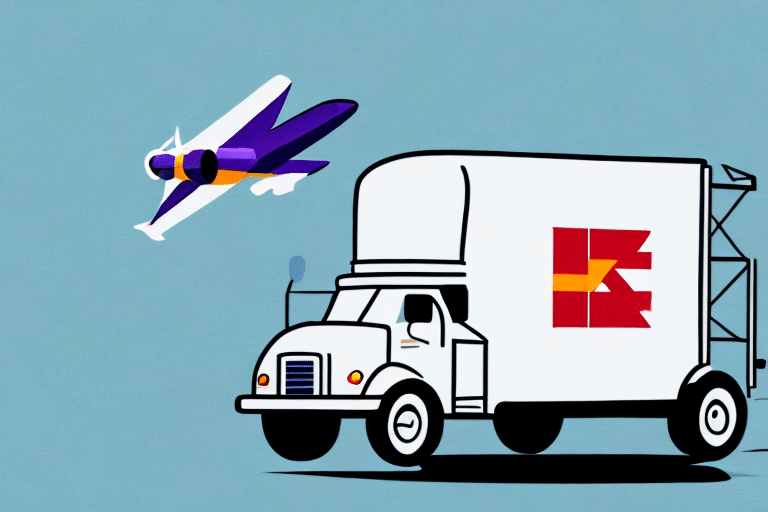Shipping Large Packages: How to Handle Packages Over 130 Inches
Sending large packages can be a challenge, especially when it comes to figuring out how to ship them securely to their destination. It requires special consideration of the size and weight of the package, as well as the materials needed to ensure its safe arrival. In this article, we will discuss the different aspects of sending a large package and provide you with the necessary information and resources to help you successfully ship your package with confidence.
What Are Considered Large Packages?
The first thing to consider when shipping a package is determining if it is classified as a "large package." Most carriers, such as USPS, FedEx, and UPS, classify a large package as any shipment that exceeds 130 inches in combined length and girth. This classification is due to the fact that larger packages require additional handling and more space, which can increase shipping costs. Understanding the dimensions and weight of your package is crucial to choosing a carrier and ensuring it arrives at its destination in good condition.
It's important to note that some carriers may have different size restrictions for large packages. For example, USPS has a maximum length of 108 inches for certain services, while FedEx and UPS may have different weight limits for large packages. Always check with your carrier to ensure your package meets their size and weight requirements.
In addition to size and weight, it's also important to consider the contents of your package. Some items may be restricted or prohibited from shipping, such as hazardous materials or perishable goods. Ensure that your package complies with all necessary shipping regulations and requirements before shipping.
Understanding Dimensional Weight and How It Affects Shipping Costs
Another key factor to consider when shipping large packages is the concept of dimensional weight. Dimensional weight refers to the amount of space a package occupies in relation to its actual weight. Carriers often charge based on the greater of the actual weight or dimensional weight, so it's important to calculate both to understand the potential shipping costs.
Calculating dimensional weight involves measuring the length, width, and height of the package and then multiplying those dimensions together. The resulting number is then divided by a dimensional factor, which varies depending on the carrier. For example, as of 2023, USPS uses a dimensional factor of 139, while FedEx and UPS use 139 for domestic shipments.
To avoid unexpected shipping costs, invest in packaging materials that are as compact and lightweight as possible. This includes using appropriately sized boxes, removing excess packaging materials, and opting for lightweight fillers like air pillows instead of heavier materials like packing peanuts. These steps help ensure that your packages are cost-effective to ship while still arriving safely and securely at their destination.
Tips for Measuring Your Package Accurately
Accurate measurement of your large package is crucial for determining correct shipping costs and preventing issues during transit. Follow these steps to ensure precision:
- Measure the length, width, and height of your package using a measuring tape, rounding up to the nearest inch.
- Include any protruding parts, such as handles or wheels, in your measurements.
- Weigh your package using a reliable scale and record the weight accurately.
- If your package contains fragile items, add extra padding or protection to prevent damage during transit.
Proper measurement helps in selecting the right shipping method and carrier, ensuring your package arrives safely and at the lowest possible cost.
How to Choose the Right Shipping Provider for Large Packages
Choosing the right carrier for your large packages involves comparing several factors to meet your specific needs:
- Prices: Compare rates from different carriers to find the most cost-effective option.
- Delivery Times: Assess the delivery speed offered by each carrier to meet your timeline.
- Tracking Options: Ensure the carrier provides reliable tracking to monitor your package's progress.
- Insurance Coverage: Evaluate the insurance options available to protect your valuable items.
- Customer Service Ratings: Consider customer reviews and service ratings for reliable support.
Additionally, consider the carrier's network coverage, especially if you're shipping internationally or to remote locations. Some carriers have limited coverage in certain regions, which could lead to delays or additional fees.
Moreover, sustainability practices are increasingly important. Choosing a carrier that adopts eco-friendly initiatives, such as using alternative fuels or minimizing packaging waste, can enhance your brand's reputation among environmentally conscious consumers.
Packaging Materials That Offer the Most Protection for Large Packages
The packaging materials you use play a significant role in ensuring your large package arrives safely. Here are some recommendations:
- Sturdy Cardboard Boxes: Use high-quality boxes reinforced with packing tape and bubble wrap to protect your items.
- Cushioning Materials: Add foam, air pillows, or packing peanuts to prevent movement inside the box.
- Pallets or Crates: For exceptionally heavy or fragile items, consider using pallets or wooden crates for added protection during shipping.
When shipping heavy items, use packaging materials that can support the weight to prevent the package from breaking open during transit. Double-walled cardboard boxes or wooden crates are ideal for providing the necessary strength and durability.
Proper labeling is also essential. Clearly label your package to indicate fragility and any special handling instructions. This ensures that your package is treated with the necessary care during shipping.
Labeling Requirements for Shipping Large Packages
Proper labeling is critical for tracking and ensuring the timely delivery of your package. Follow these guidelines:
- Recipient and Return Addresses: Clearly display both addresses using a legible font.
- Visibility: Place labels on a clear, visible part of the package to ensure they are easily readable.
- Special Instructions: Include labels indicating fragility or any other special handling instructions.
Be aware that some carriers may require specific labeling or additional documentation for large packages or restricted items. Always research and comply with carrier-specific requirements.
For international shipments, different countries may have specific labeling requirements. For instance, packages being shipped to China must include labels in both English and Chinese, while shipments to Japan require labels in Japanese. Ensure compliance to avoid delays or issues with customs.
Shipping Insurance Options for High-Value Large Packages
Shipping insurance provides added protection for your large packages, especially if they contain high-value items. Most carriers offer basic insurance coverage, but you may consider purchasing additional insurance for comprehensive protection.
When selecting shipping insurance, consider the following:
- Carrier Reputation: Choose carriers with a strong track record for handling and delivering packages safely.
- Coverage Limits: Select insurance plans that offer coverage limits appropriate for the value of your items.
- Cost: Balance the cost of additional insurance against the value of the items being shipped and the potential risk of damage or loss.
Read and understand the terms and limitations of any insurance coverage before purchasing. This ensures that you are adequately protected in the event of an incident during transit.
Preparing Your Package for Shipment: Tips and Best Practices
Proper preparation of your package is essential to ensure its safe arrival. Follow these best practices:
- Packing: Use appropriate packaging materials and techniques to protect your items.
- Sealing: Securely tape the box using strong packing tape to prevent it from opening during transit.
- Labeling: Clearly label the package with all necessary information and remove any old labels or markings to avoid confusion.
Additionally, consider the weight distribution within the package to ensure stability during handling and shipping.
Handling and Loading Large Packages Safely onto Shipping Vehicles
Safely handling and loading your large package onto shipping vehicles is crucial to prevent damage during transit. Here are some tips:
- Lifting Techniques: Use proper lifting techniques and equipment, such as dollies or forklifts, when moving heavy packages.
- Loading Guidelines: Follow the carrier's loading guidelines to ensure safe transportation.
- Weight Distribution: Ensure even weight distribution and proper balance of your package to prevent tipping or shifting during transit.
Taking these precautions helps maintain the integrity of your package and ensures it reaches its destination in good condition.
Common Mistakes to Avoid When Shipping Large Packages
Avoiding common mistakes can streamline the shipping process and reduce the risk of delays or damage. Here are some pitfalls to watch out for:
- Underestimating Size or Weight: Accurately measure and weigh your package to avoid incorrect shipping costs and processing issues.
- Adequate Packaging: Use appropriate packaging materials to protect your items and prevent damage during transit.
- Incorrect Labeling: Ensure all labels are legible and correctly placed to facilitate proper handling and delivery.
- Ignoring Carrier Requirements: Comply with all carrier-specific guidelines and regulations to avoid shipment rejections or fines.
By being mindful of these common mistakes, you can enhance the efficiency and safety of shipping your large packages.
Tracking Your Shipment: Tools and Resources to Keep You Informed
Tracking your package is essential for staying informed about its progress and estimated delivery time. Most carriers offer robust tracking services, which may include:
- Online Tracking: Use the carrier's website to monitor your package's status in real-time.
- Mobile Apps: Download carrier apps to receive updates and notifications on your smartphone.
- Email Notifications: Sign up for email alerts to stay informed about significant milestones in your package's journey.
Keep your tracking number and carrier information readily accessible. Regularly check for any updates or issues, and promptly address any delays or problems by contacting the carrier's customer service.
Dealing with Unexpected Delays and Issues During Shipping of Large Packages
Despite careful planning, unexpected delays and issues can occur during shipping. Common challenges include:
- Weather Delays: Adverse weather conditions can disrupt transportation and delivery schedules.
- Customs Issues: International shipments may face delays due to customs inspections or documentation errors.
- Delivery Problems: Incorrect addresses or unavailable recipients can lead to delivery attempts and rescheduling.
To effectively handle these issues:
- Maintain open communication with your carrier and the package recipient.
- Be flexible and patient in resolving any problems that arise.
- If you have purchased shipping insurance, promptly contact your carrier and insurance provider to file a claim if necessary.
Staying proactive and informed helps mitigate the impact of unexpected shipping challenges.
Cost-Saving Strategies: Negotiating Prices with Carriers or Using Alternative Methods of Shipping
Shipping large packages can be expensive, but several strategies can help reduce costs:
- Negotiate with Carriers: If you regularly ship large volumes, negotiate rates with your preferred carrier for bulk discounts.
- Use Alternative Shipping Methods: Explore options like freight carriers or less-than-truckload (LTL) shipping, which can be more cost-effective for oversized packages.
- Compare Rates: Use shipping comparison tools to find the best rates and services that suit your needs.
- Optimize Packaging: Reduce dimensional weight by using appropriately sized and lightweight packaging materials.
Implementing these cost-saving strategies can significantly lower your shipping expenses while maintaining reliability and service quality.
Conclusion: How to Successfully Ship Your Large Packages with Confidence
Shipping large packages can be a complex and daunting task, but with the right information and resources, you can do it successfully and confidently. Remember to:
- Properly measure and weigh your items.
- Select the right carrier based on your specific needs.
- Use appropriate packaging materials to protect your items.
- Label your package clearly and accurately.
- Utilize tracking tools to monitor your shipment.
- Be prepared to handle any unexpected issues that may arise.
By following these guidelines and best practices, you can ensure your large package arrives safely and on time, providing peace of mind and satisfaction for both you and your recipients.






















